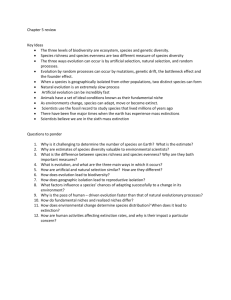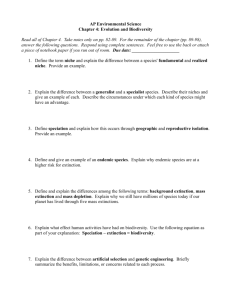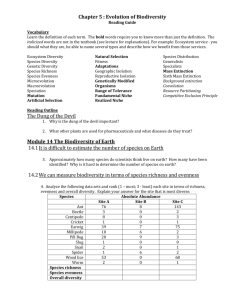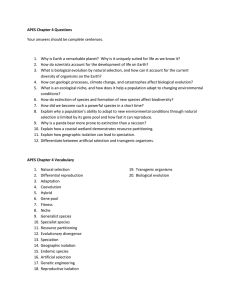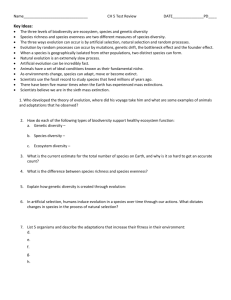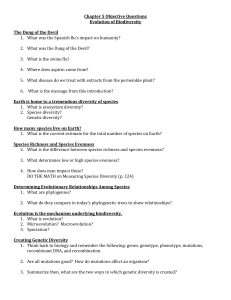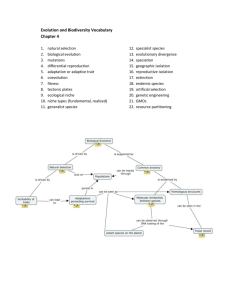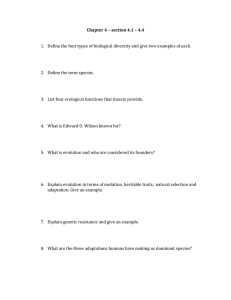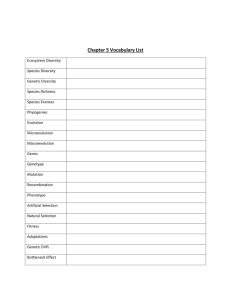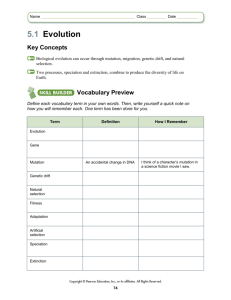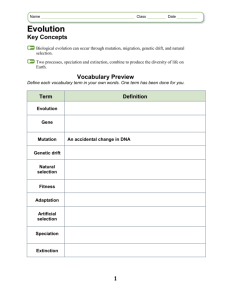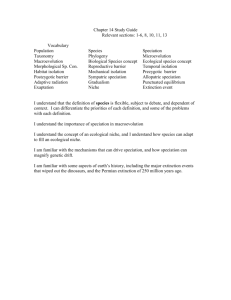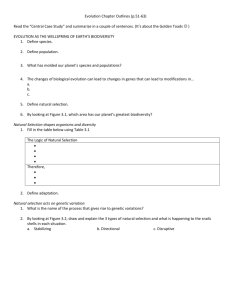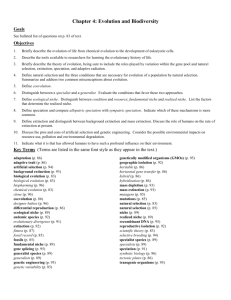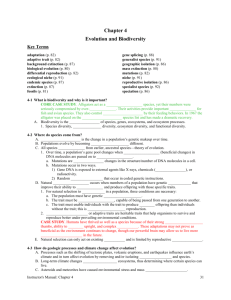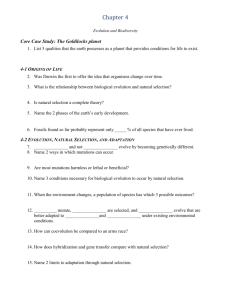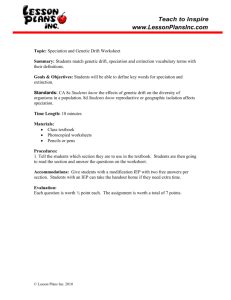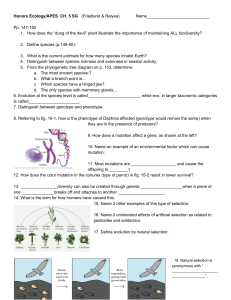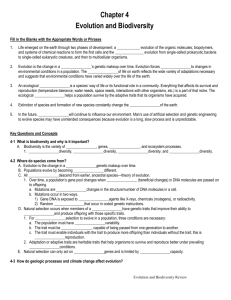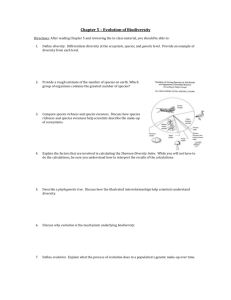AP Chapter 5 - Madeira City Schools
advertisement
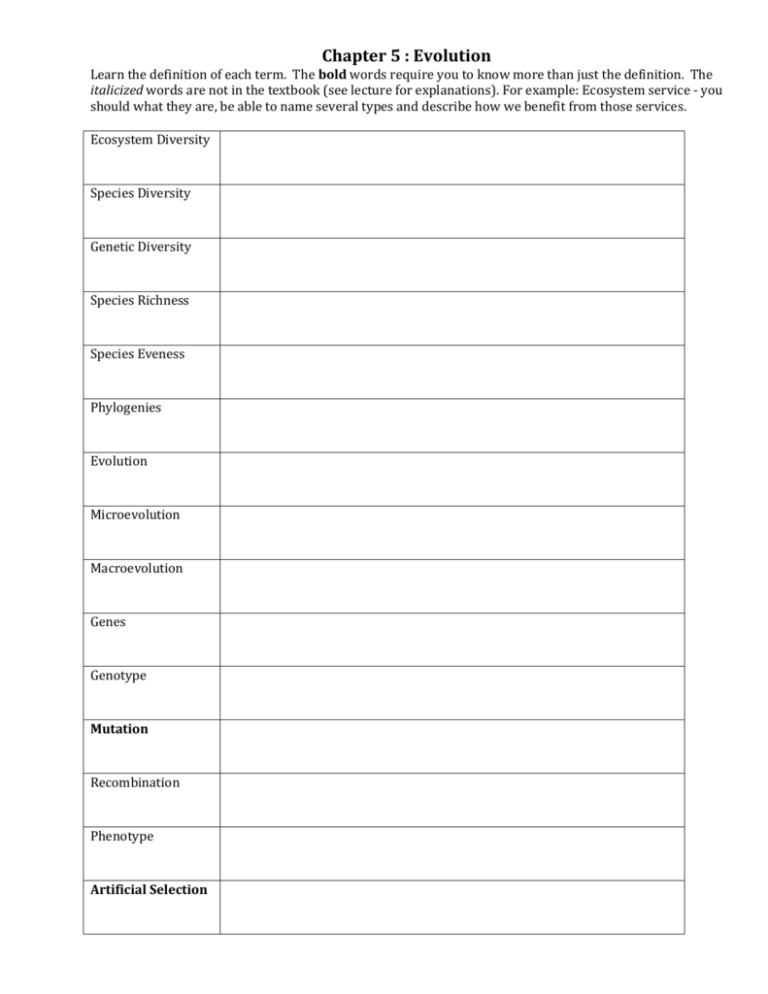
Chapter 5 : Evolution Learn the definition of each term. The bold words require you to know more than just the definition. The italicized words are not in the textbook (see lecture for explanations). For example: Ecosystem service - you should what they are, be able to name several types and describe how we benefit from those services. Ecosystem Diversity Species Diversity Genetic Diversity Species Richness Species Eveness Phylogenies Evolution Microevolution Macroevolution Genes Genotype Mutation Recombination Phenotype Artificial Selection Natural Selection Fitness Adaptations Genetic Drift Bottleneck Effect Founder Effect Geographic Isolation Reproductive Isolation Allopatric Speciation Sympatric Speciation Genetic Engineering Genetically Modified Organisms Range of Tolerance Fundamental Niche Realized Niche Species Distribution Niche Generalists Niche Specialists Fossils Mass Extinction Sixth Mass Extinction The Dung of the Devil Summarize: 5.1 Earth is home to a tremendous diversity of species 1. Approximately how many species do scientists think live on earth? How many have been identified? Why is it hard to determine the number of species on earth? 2. Analyze the following data sets and rank (1 – most; 3 - least) each site in terms of richness, evenness and overall diversity. Explain your answer for the site that is most diverse. Species Absolute Abundance Site A Site B Site C Ant 76 8 143 Beetle 3 0 2 Centipede Cricket Earwig Millipede Pill Bug Slug Snail Spider Wood lice Worm Species richness Species evenness Overall diversity 8 1 39 10 20 1 2 1 53 2 0 0 7 6 9 0 0 6 0 0 3 1 75 2 3 0 1 2 68 1 5.2 Evolution is the mechanism underlying biodiversity 3. Define natural selection and artificial selection. What is the difference between natural selection and artificial selection? What are some concerns about artificial selection? 4. What are the 5 key elements of Darwin’s Theory of Natural Selection? 5.3 Speciation and extinction determine biodiversity 5. Define geographic isolation and reproductive isolation. Describe how each results in speciation. 6. For each factor, determine which choice supports the claim Factor Species adapt fastest when Populations are most likely to [factor] is survive when [factor] is Rate of FAST or SLOW FAST or SLOW Environmental change Genetic Variation HIGH or LOW HIGH or LOW Population Size LARGE or SMALL LARGE or SMALL Generation Time LONG or SHORT LONG or SHORT 7. Is Genetic engineering faster or slower than natural selection? Explain. 5.4 Evolution shapes ecological niches and determines species distributions 8. What is the difference between a fundamental and a realized niche? 9. What is the difference between a generalist and a specialist? List some characteristics of each. 10. Which type of species (generalist or specialists) do better when: a. Environmental conditions are changing? b. Environmental conditions are stable? 11. Use Figure 5.2 to explain how changing environmental conditions can cause the distribution of species to change. 12. Explain how climate change might impact the distribution of spruce trees. (You have to THINK – look at how the melting of the ice over the last 18,000 years changed the distribution and then apply that information to climate change). Would the range get larger or smaller? Would it be found in more places or less places? Where would the range be in the future? 13. What differences are there between the 5 previous mass extinctions and the one occurring now? How long does it typically take for biodiversity to “recover” after a mass extinction?
